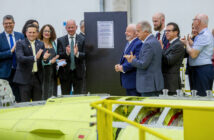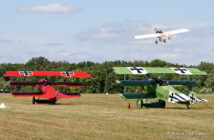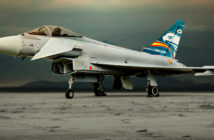By Jean-Michel Guhl
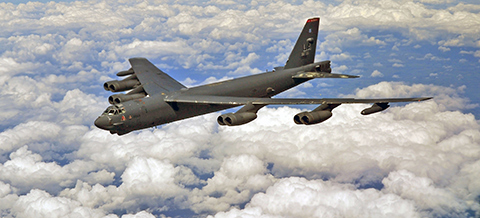
A Boeing B-52H Stratofortress deployed to RAF Fairford, England from Barksdale Air Force Base, Louisiana, prepares to air refuel with a KC-135 Stratotanker from RAF Mildenhall, England over the United Kingdom on 11 June 2014. The B-52 fuel tank can hold up to 312,197pounds of fuel during the refueling mission. Having been around for already 60 years, the B-52 is now set to soldier on well into the 21st Century. ©USAF/Senior Airman Christine Griffiths
Oklahoma City, Oklahoma, 2 October 2015 – The entire B-52 bomber fleet of the U.S. Air Force will soon be equipped with technology that greatly enhances the aircraft’s combat capabilities in the digital battlespace. The USAF on last 28 August awarded Boeing a contract for B-52 bomber Combat Network Communications Technology, known as CONECT.
The new CONECT contract will bring capability to the entire fleet. Boeing and the Air Force worked closely under urgent deadlines to complete contract negotiations in time for upgrades to continue uninterrupted.“The multifunction, critical capability that CONECT provides for the B-52 was at risk for missing kit installation schedule. Boeing and the Air Force’s collaborative effort to reduce the kit contracting process by 50% paved the way to deliver on-time, quality war-fighting capabilities.
Parallel efforts, which required early participation, communication and coordination from Boeing, sub-tier suppliers, DCAA and DCMA were key in making CONECT a success!” said Renee Sauerland, B-52 CONECT project manager for the Air Force. Boeing’s CONECT modernizes communication systems for the B-52 bombers with enhancements that keep the bombers in flight.
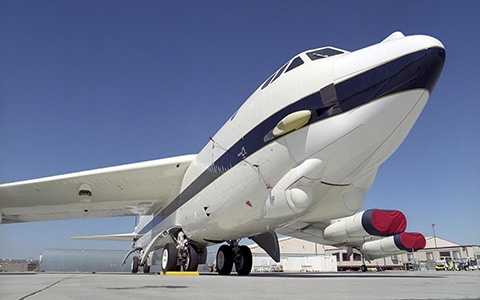
NASA obtained a B-52H bomber from the U.S. Air Force in 2001, intending to use the aircraft as an air-launch and testbed aircraft to support NASA, Air Force and industry flight research and advanced technology demonstration efforts at NASA’s Dryden Flight Research Center, Edwards AFB, California. The B-52H replaced Dryden’s famous B-52B ”008” following that aircraft’s retirement on 17 December 2004. However, with no research projects requiring its capabilities on the horizon under NASA’s restructured aeronautics research programs, the decision was made to return the aircraft to the Air Force. ©NASA/Tony Landis
“Each B-52 bomber comes in for program depot maintenance once every four years, and CONECT is installed at that time. We have delivered all previously contracted kits to the Air Force but needed to get additional kits on contract so upgrades could continue on every bomber that comes through – once you miss an aircraft, it is four years before you have another opportunity to touch it. I’m proud of the Boeing team and thankful for our cooperative relationship with the customer that allowed us to complete negotiations so that the remainder of the fleet will receive CONECT,” said Scot Oathout, B-52 program director for Boeing.
The B-52 bomber was built during the Cold War, but CONECT provides 21st Century digital capabilities that give the bomber the agility and flexibility needed for the modern battlefield. The B-52 has been in active service with the USAF since 1955. Some 80 « Buffs » are still active with a few in reserve. The last Stratofortresses should only leave the scene in 2040!

